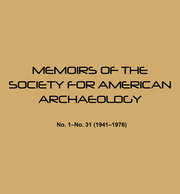No CrossRef data available.
Article contents
Chapter 5. Social Organization
Published online by Cambridge University Press: 27 June 2018
Extract
The Birhor constitute a society which is easily distinguished and studied apart from the dominant Indian social groups surrounding them. But they by no means constitute a politically autonomous society. The ultimate characteristics of political autonomy such as capital punishment, the waging of war, and so forth, do not arise as a possibility for the Birhor. Actual contact with the larger society in the form of government power is infrequent, inconsistent, and understood very little by the Birhor. A more important relation with the larger, agricultural Hindu and Muslim society is the traditional caste structure in which the Birhor, regardless of their own opinions, are defined as a very low caste group and are so treated by villagers.
The major effect of this caste-like treatment, from the point of view of this study, has been to retard change in the Birhor way of life by denying them land and preserving their traditional relationship to the agricultural villages. This relationship might best be described as a parabiotic or commensal relationship. The most important aspects of this commensal relationship are lack of political autonomy of the Birhor and the importance, to them, of trade with villagers. On the other hand, the life of the villager would be little affected by the presence or absence of the Birhor. The economic aspects of trade between Birhor and villager are described in Chapter 7.
- Type
- Section II: The Birhor of Hazaribagh
- Information
- Memoirs of the Society for American Archaeology , Volume 29: A Model of band society , 1974 , pp. 50 - 70
- Copyright
- Copyright © Society for American Archaeology 1974


